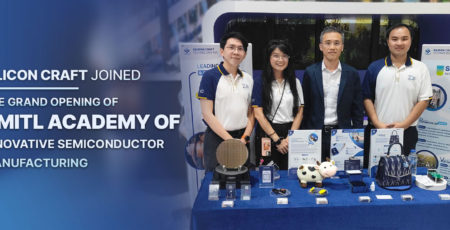Efficient management of the SARS-CoV-2 pandemic heavily relies on high-throughput testing. While Polymerase Chain Reaction (PCR) testing, the gold standard, is very accurate, it may not be the practical choice for mass testing in areas with limited resources. While lateral flow immunoassay (LFIA)-based rapid antigen tests are friendly use in terms of more accessible, less expensive, and convenient, making them a great choice for testing at home. However, LFIA can only detect high viral load infections because of low sensitivity. Therefore, a new method with higher reliability is needed to identify asymptomatic cases. Researchers from the University of Freiburg in Germany have developed an innovative solution to address these challenges. They have created a new microfluidic polymer-based electrochemical biosensor using CRISPR/Cas-powered assays. This biosensor can provide rapid, low-cost, and highly accurate point-of-care testing for SARS-CoV-2 Omicron infections, making it a precious tool in the fight against the pandemic. [Johnston et al., Materials Today 61 (2022) 129-138, https://doi.org/10.1016/j.mattod.2022.11.001].
How does the CRISPR-powered work?
CRISPR is a type of DNA found in bacteria that can identify and eliminate matching sequences related to infection. When combined with Cas-protein, an enzyme that uses CRISPR to recognize and remove matching sequences, CRISPR becomes a powerful tool for editing DNA sequences and nucleic acid detection. Many different types of Cas nuclease, including Cas9, Cas12a, Cas13a, etc., have been applied in gene-detecting methodologies. Johnston et al. combine a CRISPR-associated protein (Cas13a) assay (Fig. 1) with a new microfluidic electrochemical biosensing device called BiosensorX, which can detect two genetic sequences that are typical of SARS-CoV-2 in nasal or oral swab samples. If the sample contains the RNA snippet of interest, the CRISPR-Cas13a is activated and cleaves the reporter RNA provided within the reaction mix. This method offers a short Sample-to-result time (∼30 min) with a detection limit of 2,000 copies/µl for the E gene, 7,520 copies/µl for the RdRP gene, and 50 copies/ml for combined targets.

Fig. 1 Type VI CRISPR systems use the RNA-guided Cas13 nuclease to sense and cleave RNA targets. [A. J. Meeske et al, Molecular Cell 71 (2018) 791–801, https://doi.org/10.1016/j.molcel.2018.07.013]
Multiplexing detection System
Additionally, BiosensorX platform offers a simultaneous screening of biological molecules. The team conducted CRISPR-based assays for detecting COVID-19-specific RNA sequences simultaneously with a protein-based assay for monitoring ß-lactam antibiotic levels in serum samples. Bacterial infections generally occur with viral infections due to immune system impairment and can be treated with generic antibiotics. Different assays are immobilized onto the incubation areas of a single-channel microfluidic chip in a sequential arrangement, allowing for simultaneous detection of the analytes.
Biosensor X integrated with NFC
new microfluidic multiplexed platform using a micro peristaltic pump has been integrated with a SIC4341 as an NFC potentiostat. The minimized detection system is achieved, providing a promising on-site tool for identifying individuals infected with concerning variants and monitoring their disease progression, along with other potential biomarkers or medication clearance, as shown in Fig. 2.

 Fig. 2 The proposed BiosensorX within the envisioned point-of-care scenario and BiosensorX integrated SIC4341 can be used to track the treatment of bacterial co- or superinfection in COVID-19 patients. Demonstration of the point-of-care applicability of the CRISPR-Biosensor platform using an NFC potentiostat. [Johnston et al., Materials Today 61 (2022) 129-138, https://doi.org/10.1016/j.mattod.2022.11.001].
Fig. 2 The proposed BiosensorX within the envisioned point-of-care scenario and BiosensorX integrated SIC4341 can be used to track the treatment of bacterial co- or superinfection in COVID-19 patients. Demonstration of the point-of-care applicability of the CRISPR-Biosensor platform using an NFC potentiostat. [Johnston et al., Materials Today 61 (2022) 129-138, https://doi.org/10.1016/j.mattod.2022.11.001].

















